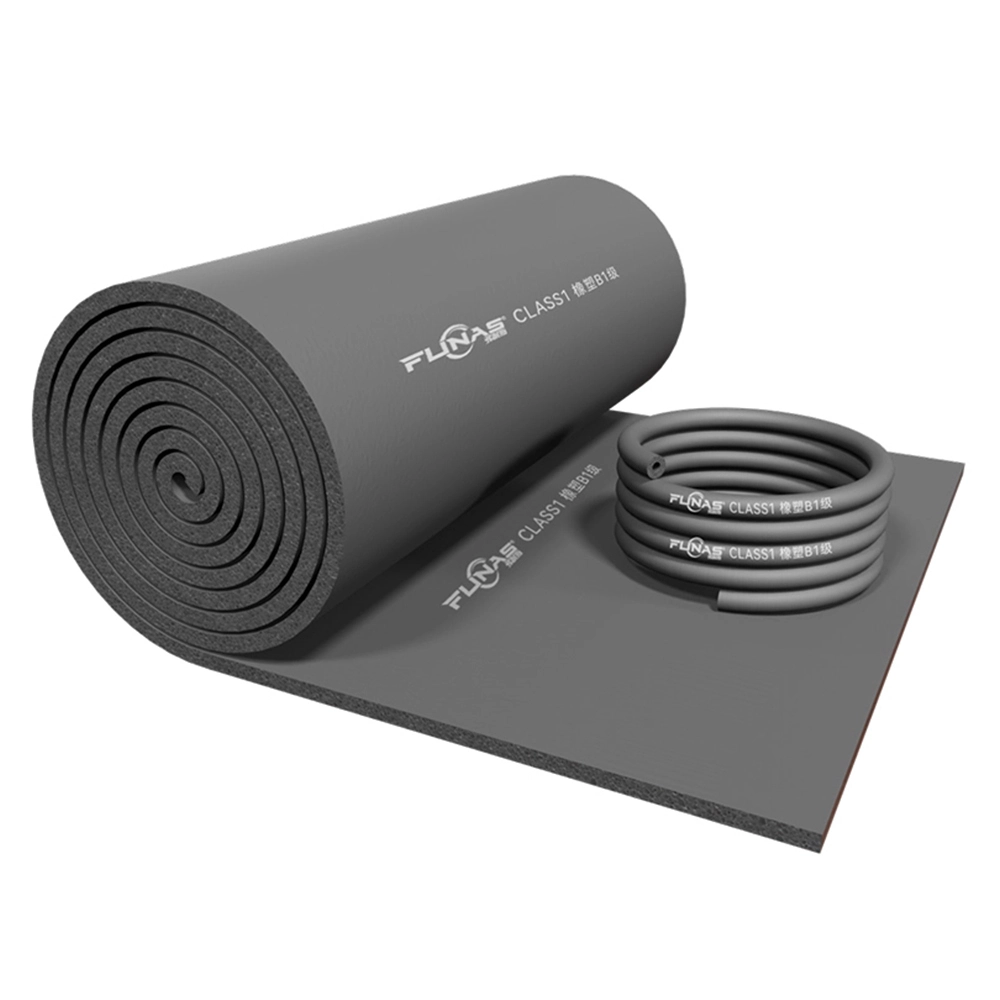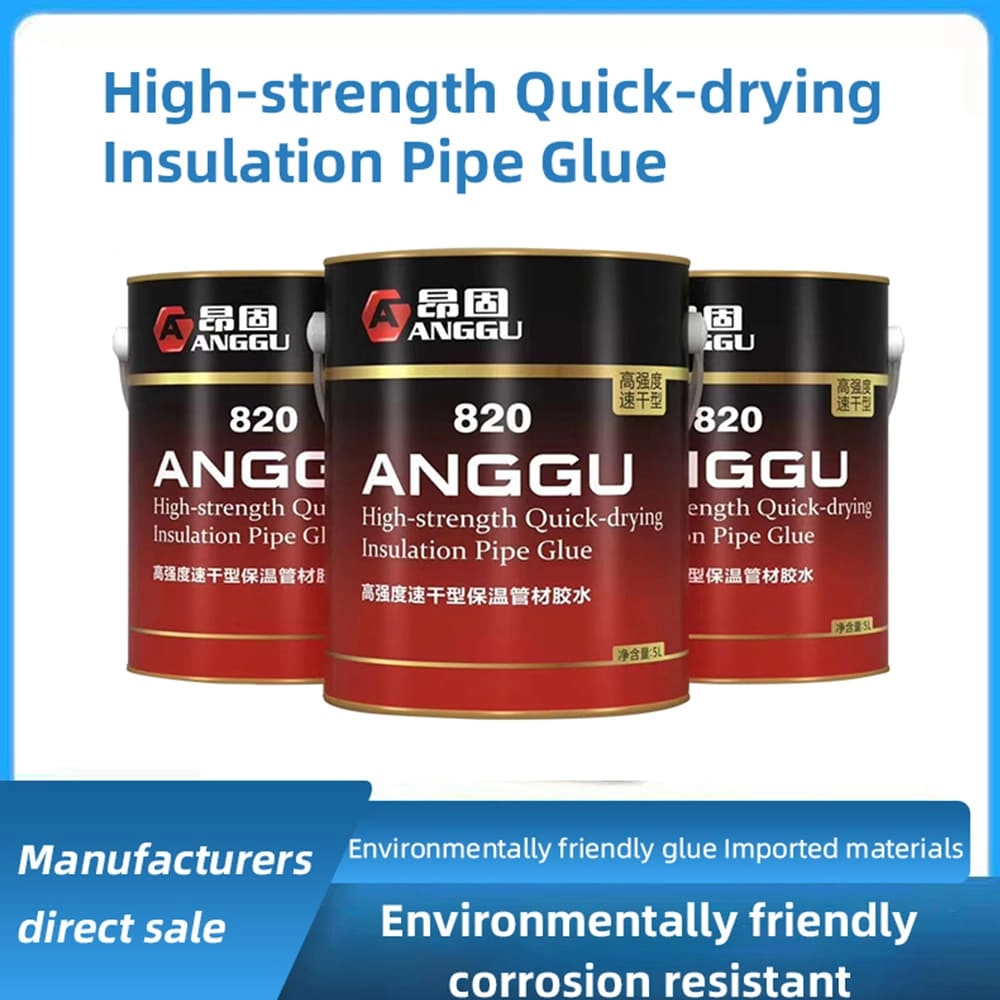is rubber pipe insulation better than foam | FUNAS Expert Guide
Discover the differences between rubber and foam pipe insulation in this detailed blog post. We address five common questions thermal insulation buyers ask, covering thermal conductivity, durability, cost, moisture resistance, and installation. Backed by the latest industry data, this guide helps professionals in the thermal insulation materials industry make informed procurement decisions. Learn which material suits your needs and explore the advantages of FUNAS as a trusted brand.
- Is Rubber Pipe Insulation Better Than Foam? A Guide for Thermal Insulation Buyers
- 1. How Do Rubber and Foam Compare in Thermal Conductivity?
- 2. Which Material Offers Better Durability and Lifespan?
- 3. Is Rubber Insulation More Cost-Effective Than Foam?
- 4. How Do Rubber and Foam Handle Moisture Resistance?
- 5. Which Material Is Easier to Install and Maintain?
Is Rubber Pipe Insulation Better Than Foam? A Guide for Thermal Insulation Buyers
In the thermal insulation materials industry, choosing the right pipe insulation is critical for energy efficiency, cost savings, and system longevity. Two popular materials, rubber and foam, often leave buyers wondering: Is rubber pipe insulation better than foam? This blog post answers this question by addressing five common concerns and questions that industry professionals have when making procurement decisions. Using up-to-date industry data, we provide professional insights to guide your choice.
1. How Do Rubber and Foam Compare in Thermal Conductivity?
Thermal conductivity, measured in W/m·K, determines how well a material prevents heat transfer. According to recent data, elastomeric rubber foam insulation typically has a thermal conductivity range of 0.034 to 0.038 W/m·K, while polyethylene foam insulation ranges from 0.032 to 0.040 W/m·K (source: industry reports on insulation materials). Rubber often provides slightly better consistency in maintaining low thermal conductivity over a wider temperature range, making it ideal for high-temperature applications. Foam, however, can be effective for general-purpose use and lower-temperature systems.
2. Which Material Offers Better Durability and Lifespan?
Durability is a key concern for industrial buyers. Rubber insulation, particularly elastomeric types, is known for its resilience to UV exposure, chemicals, and mechanical stress. It often lasts up to 20 years in harsh environments. Foam insulation, such as polyethylene or polyurethane, may degrade faster under UV light or extreme conditions, with a typical lifespan of 10-15 years (source: insulation manufacturer guidelines). Rubber is the preferred choice for outdoor or industrial applications where longevity is critical.
3. Is Rubber Insulation More Cost-Effective Than Foam?
Cost is a major factor in procurement. Foam insulation tends to be less expensive upfront, with prices ranging from $0.50 to $1.50 per linear foot, depending on thickness and type. Rubber insulation, on the other hand, can cost between $1.00 and $2.50 per linear foot (source: market analysis from insulation suppliers). While foam offers initial savings, rubber’s longer lifespan and reduced maintenance costs often make it more cost-effective over time, especially for large-scale projects.
4. How Do Rubber and Foam Handle Moisture Resistance?
Moisture resistance is crucial to prevent mold, corrosion, and insulation failure. Rubber insulation, especially closed-cell elastomeric foam, has excellent inherent moisture resistance, often with a water vapor permeability of less than 0.1 perm-inch. Standard foam insulation, unless treated, may absorb moisture over time, leading to reduced performance (source: technical data from insulation studies). For humid or wet environments, rubber is typically the better choice.
5. Which Material Is Easier to Install and Maintain?
Installation ease affects labor costs and project timelines. Foam insulation is lightweight and often comes in pre-slit forms, making it easier and quicker to install, especially for DIY or small-scale projects. Rubber insulation, while slightly heavier and less flexible, offers better adhesion and a more secure fit in complex systems (source: user feedback from industry forums and supplier insights). Maintenance for both is minimal, but rubber’s durability often reduces the need for frequent replacements.
Conclusion: Why Choose FUNAS?
Deciding between rubber and foam pipe insulation depends on your specific needs—thermal performance, durability, cost, moisture resistance, or ease of installation. At FUNAS, we pride ourselves on offering high-quality thermal insulation solutions tailored to the diverse demands of the industry. Our range of rubber and foam insulation products is designed with cutting-edge technology, ensuring superior performance and energy efficiency. Backed by rigorous testing and compliance with industry standards, FUNAS provides reliable materials and expert support to help you make the best procurement decisions. Trust FUNAS to be your partner in achieving optimal insulation results.

The Ultimate Guide to Glass Wool Insulation 2026

Top 10 Foam Rubber Sheet Manufacturers for Insulation & More

Top 14 Rock Wool Panel Brands: Expert Guide for 2026

Top 10 Insulation Adhesives for Heat & Soundproofing 2026
service
What types of rubber foam insulation products do you offer?
We offer a wide range of rubber foam insulation products, including custom shapes and sizes, thermal and acoustic insulation solutions, and options with specialized coatings such as flame retardancy and water resistance. Our products are suitable for applications in HVAC, automotive, construction, and more.
How does your technical support work?
Our technical support team is available to guide you through every stage of your project—from product selection and design to installation. We provide expert consultation to ensure that you get the best insulation solution for your needs and can assist with troubleshooting if needed.
Are your rubber foam products environmentally friendly?
Yes, our insulation products are designed with sustainability in mind. They help reduce energy consumption by minimizing heat loss and gain, and they are made from durable materials that have a long life cycle, reducing the need for frequent replacement.
FAQ
What types of rubber foam insulation do you offer?
We offer a wide range of rubber foam insulation with different thicknesses and specifications. Thermal insulation material manufacturer FUNAS sleeves and sheets are suitable for different application scenarios.
You might also like

Special adhesive for insulation nail
This product has passed the EU REACH non-toxic standard and ROHS non-toxic standard. (This product is a yellow liquid).
Anggu insulation nail special adhesive is a adhesive with high viscosity, slow drying, aging resistance, high strength, and excellent brushing performance; The special adhesive for insulation nails has a slow drying speed and strong adhesion to the iron sheet. It can be flexibly moved during construction, and has a strong bonding force after curing, low odor.and is non-toxic.

Wholesale Roof And Wall Thermal Heat Insulation 50mm Thickness Aluminum Foil Fiberglass Insulation Panel Board Glass Wool Price
Glass wool is the molten glass fiber, the formation of cotton-like material, chemical composition belongs to the glass category, is a kind of inorganic fiber. With good molding, small volume density, thermal conductivity both, thermal insulation, sound absorption performance is good, corrosion resistance, chemical stability and so on.

Wholesale Glass Wool Board Panel Sheet with or without aluminum foil
Premium glass wool board with excellent thermal insulation and sound absorption. Suitable for different construction needs.

Wholesale Rock Wool Mineral Wool Board Panel Sheet
High-performance rock wool board for superior thermal and acoustic insulation. A reliable choice for building projects.
Leave a message
Have any questions or concerns about our products? Please leave us a message here and our team will get back to you promptly.
Your queries, ideas, and collaboration opportunities are just a click away. Let’s start a conversation.


















































